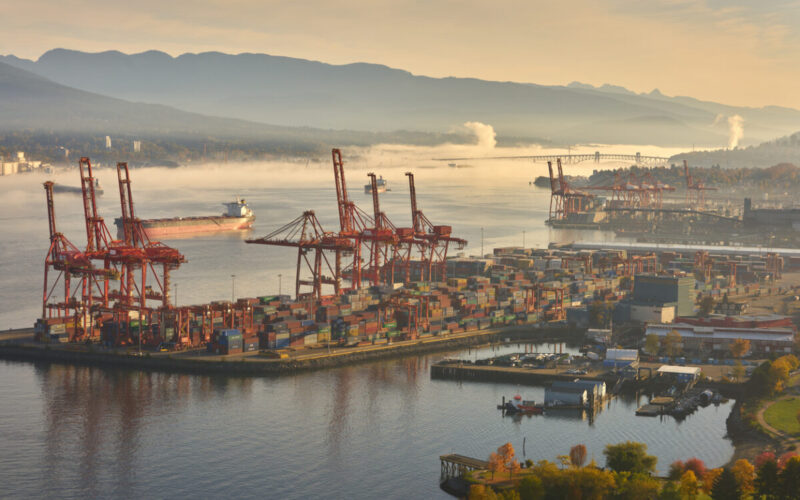The Vancouver Fraser Port Authority has announced an expansion to its centralised maritime traffic scheduling system to span the whole Burrard Inlet.
The system allows the port authority to take an active role in sequencing commercial ship movements in Burrard Inlet – which is home to 23 of the Port of Vancouver’s 29 major terminals, receives nearly two-thirds of the port’s deep-sea ship traffic, and supports more than $105 billion in annual goods movement.
The centralised scheduling system, which was created in collaboration with DHI SeaPort OPX, incorporates advanced digital modelling such as weather predictions and tides to assist in the planning and optimisation of commercial ship movements in high-traffic regions of Vancouver Harbour.
It is projected to assist in the coordination of over 5,000 cargo vessels, cruise ships, and tug-pulling barge movements each year, with up to 20 daily transits beneath the Lions Gate Bridge during peak demand.
READ: Port of Vancouver reports mixed traffic in 2023
The system will also improve awareness of maritime movements in Burrard Inlet, allowing port users to coordinate more effectively and ship, terminal, and rail bridge operators to anticipate demand and optimise operations.
This involves giving vision over ship transits via the Second Narrows rail crossing, allowing CN to increase rail service capacity and dependability throughout the North Shore commerce route.
In 2023, North Shore terminals handled around 30 per cent of the port’s total cargo traffic, including 50 per cent of grain exports.
The port authority’s Active Vessel Traffic Management Program includes a centralised scheduling system that was implemented in eastern Burrard Inlet in October 2023.
It facilitates the routing of cargo ships, tugs, and barges to six marine terminals east of the Second Narrows rail bridge, including bulk exporters Pacific Coast Terminals (PCT) and Trans Mountain.
READ: Port of Vancouver reports stable half-year container volumes
In 2023, more than $105 billion in commodities travelled through Burrard Inlet, including bulk exports like grain and fertilizer, containerized trade, and breakbulk cargo including forestry goods and construction steel, as well as 332 cruise liner trips to the Canada Place terminal.
Almost 2,000 of the port’s 3,000 annual deep-sea ship journeys travel via Burrard Inlet. The port authority intends to expand the centralised scheduling system to the Fraser River by the end of 2025, covering the whole Port of Vancouver.
In October, the Vancouver Fraser Port Authority named Captain Shri Madiwal as Vice President (VP) of Operations and Supply Chain.








